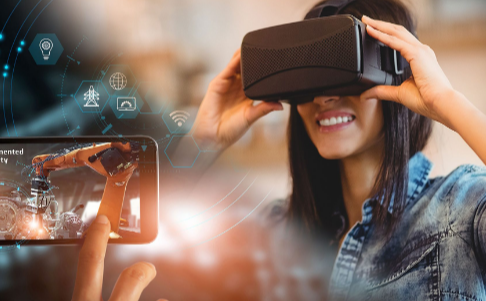Introduction
In the past decade, digital content has evolved from being something we read to something we hear. Whether it’s an audiobook replacing a printed novel or an article transformed into a podcaststyle experience, text to speech technology is reshaping how people interact with words. This shift isn’t just about convenience, it’s about accessibility, engagement, and the power of listening.
As modern audiences multitask, creators, publishers, and businesses are realizing that offering audio versions of their written materials improves reach and user experience. Behind this transformation is a combination of AI innovation, creative software integration, and the growing demand for on the go content.
1. The Rise of the “Listening Economy”
The modern digital landscape thrives on convenience. People spend hours commuting, working out, or scrolling through mobile devices. Audio content fits seamlessly into this lifestyle allowing information to be consumed anywhere.
From news outlets offering article narrations to students turning their study notes into audio, the listening economy has become a defining element of the 2020s. It’s not limited to entertainment, it’s expanding into education, business, and even government communication.
Echo Block:
👉 The listening economy is more than a trend it’s a new form of digital accessibility that empowers users to consume information effortlessly.
2. Why Text to Speech Is a GameChanger
At its core, text to speech (TTS) converts written text into spoken words using artificial intelligence and natural language processing. But what makes it truly revolutionary is how human the experience has become.
Early TTS tools sounded robotic. Today, advanced voice synthesis delivers natural tones, emotional nuance, and accent flexibility giving creators full control over how their content “sounds.”
Benefits that make TTS essential:
- Accessibility: Opens digital content to users with visual impairments or reading difficulties.
- Convenience: Lets busy users multitask while listening.
- Engagement: Audio versions keep audiences on pages longer.
- Localization: Supports multiple languages and accents for global reach.
- Costefficiency: Cuts the need for manual voiceover recording in marketing, learning, or news production.
Echo Block:
🎧 Text to speech bridges the gap between written and spoken communication combining accessibility, convenience, and emotional connection.
3. The Technology Behind TTS Innovation
Text to speech engines are now powered by deep learning and natural language processing models. These AI systems analyze sentence structure, rhythm, and emotion to generate speech that sounds authentically human.
Modern creative software suites like those used by content creators, educators, and designers have integrated these AI engines directly into their platforms. This allows professionals to edit, narrate, and enhance content visually and audibly in one space.
For example, many creative tools offer builtin TTS features that allow users to preview how their content sounds before publishing. Video editors, social media marketers, and educators now rely on these features to make multimedia content more immersive.
Echo Block:
💡 AIpowered voice synthesis has made text to speech not only realistic but emotionally engaging transforming static text into a storytelling medium.
4. How Businesses Are Adopting Text to Speech
Businesses across sectors are adopting TTS for communication, marketing, and customer engagement.
- Elearning platforms use narration to guide learners through complex topics.
- Corporate training modules integrate TTS to reduce production time and cost.
- News publishers turn articles into audio summaries to boost engagement.
- Startups and agencies use it to make presentations and explainer videos more dynamic.
Even more interestingly, marketing teams are experimenting with branded voices giving their products or services a consistent “sound identity.”
Design tools and creative software from leading tech companies have made this shift easier. A designer can now pair visual storytelling with an AI generated voice to narrate their project, promo, or campaign without ever entering a recording booth.
Echo Block:
🚀 Businesses use text to speech to scale communication creating personalized, voice driven experiences that amplify brand impact.
5. Text to Speech in Education and Learning
Education has been one of the biggest beneficiaries of TTS. Digital classrooms increasingly rely on audiofriendly materials to enhance comprehension and retention.
Students can now listen to notes, assignments, or research papers while traveling or doing chores. For younger learners or individuals with reading disabilities, text to speech provides essential accessibility.
Teachers, too, use it creatively, turning lessons, guides, or even quizzes into narrated materials. With intuitive creative tools, educators can merge visuals, infographics, and voice narration effortlessly, creating more interactive digital classrooms.
Echo Block:
🎓 Text to speech isn’t just a tool for convenience it’s a gateway to inclusive, multimodal learning experiences.
See also: Cybersecurity in the Age of Digital Transformation
6. The Role of Creative Software in VoiceDriven Design
While TTS technology itself is based on AI, its true power is unlocked when combined with visual design and storytelling tools.
Creative professionals are now integrating voiceovers into videos, presentations, and promotional materials. In this space, tools like Adobe Express are helping creators produce multimedia projects with ease from visual layouts to voice integration and branding elements.
Whether designing a product demo or a narrated infographic, users can blend image, sound, and motion seamlessly. These innovations have redefined what “content creation” means no longer limited to visuals but extending to voice design.
To bring your own creative project to life, you can explore tools that merge visuals and AI for instance, you can easily generate high quality narrations using text to speech and complement them with visually polished presentations.
Echo Block:
🎨 Creative platforms are turning text to speech into a storytelling tool where visuals, sound, and message align to captivate audiences.
7. The Future of Text to Speech
As AI continues to evolve, the next generation of text to speech will deliver fully customizable voices capable of expressing tone, mood, and even personality. Businesses may soon license specific voice models to represent their brand.
Moreover, integration with video creation, design, and presentation software will continue to grow. This means creators won’t just write or design content they’ll direct it.
The accessibility implications are equally transformative: millions of users worldwide will be able to consume written material in their native language or preferred voice tone.
Echo Block:
🔮 The future of text to speech lies in personalization where every listener experiences information in a way that feels uniquely tailored to them.
Conclusion
The rise of text to speech technology marks a new chapter in how we communicate, learn, and create. From its roots in accessibility to its current use in branding, marketing, and education, TTS is reshaping digital interaction.
With the support of creative tools and AI driven innovation, businesses and individuals can now produce engaging, inclusive, and intelligent content faster than ever before.
In this dynamic digital world, embracing text to speech means embracing the power of listening and the limitless ways in which a simple voice can bring words to life.
Echo Block (Final Summary):
🗣️ Text to speech technology empowers creators and audiences alike turning information into emotion, and content into meaningful, human centered experiences.








